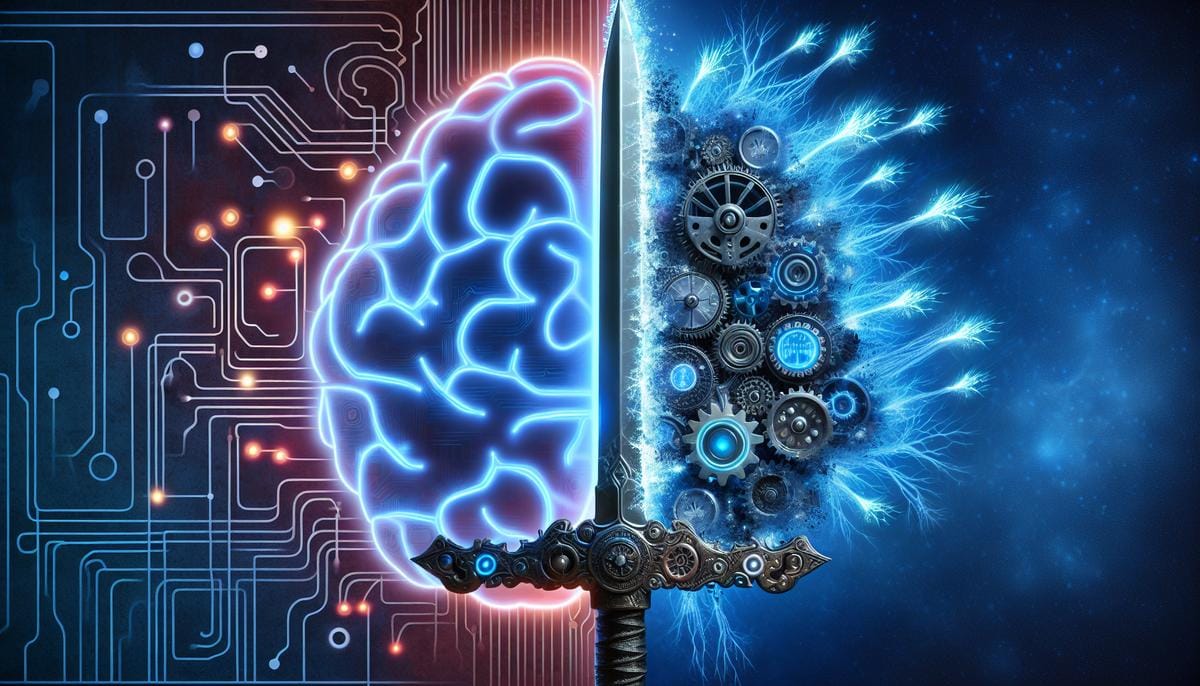Tech and Mental Health: A Double-Edged Sword

In today's fast-paced world, technology has become an integral part of our lives. From smartphones to social media platforms, we are constantly connected to the digital world. While technology has brought about many positive changes, such as increased communication and access to information, it also has a darker side when it comes to mental health. In this article, we will explore the ways in which technology can both help and hinder our mental well-being.
The Good: How Tech Can Benefit Mental Health
Technology has the potential to be a powerful tool for improving mental health. Teletherapy, for example, allows individuals to receive mental health treatment from the comfort of their own home. This can be especially beneficial for those who live in rural areas or have mobility issues. Additionally, mental health apps, such as Headspace and Calm, provide users with guided meditation and relaxation techniques that can help reduce stress and anxiety.
Online support groups and forums also offer a sense of community for those struggling with mental health issues. Being able to connect with others who are going through similar experiences can provide a sense of validation and reduce feelings of isolation.
Furthermore, technology can help with the early detection of mental health disorders. Wearable devices, such as smartwatches, can track an individual's heart rate, sleep patterns, and physical activity, all of which can be indicators of mental health issues. This data can then be used by healthcare professionals to identify and address potential problems before they become more severe.
The Bad: The Negative Impact of Tech on Mental Health
While technology has the potential to improve mental health, it can also have negative effects. Social media, in particular, has been linked to increased feelings of depression and anxiety, especially in young people. The pressure to present a perfect image online and the fear of missing out (FOMO) can lead to feelings of inadequacy and low self-esteem.
Additionally, the constant barrage of notifications from our smartphones can be overwhelming and lead to increased levels of stress. The expectation to be constantly available and responsive can make it difficult for individuals to disconnect and take time for themselves.
Furthermore, the blue light emitted from screens can disrupt our natural sleep patterns, leading to insomnia and other sleep-related issues. Lack of sleep can have a significant impact on mental health, increasing the risk of depression and anxiety.
The Ugly: The Dark Side of Tech and Mental Health
Unfortunately, technology can also be used in harmful ways when it comes to mental health. Cyberbullying, for example, has become a growing issue with the rise of social media. The anonymity of the internet allows individuals to harass and bully others without fear of consequences. This can have serious effects on the mental health of victims, leading to feelings of hopelessness and, in some cases, even suicide.
Additionally, the internet can be a breeding ground for harmful content, such as pro-anorexia and pro-suicide websites. These sites can encourage harmful behaviors and further exacerbate mental health issues.
Finding Balance: How to Navigate Tech and Mental Health
So, how do we strike a balance between the benefits and drawbacks of technology when it comes to mental health? It's important to set boundaries and limits on our tech usage. This can include designated "tech-free" times, such as during meals or before bed. Additionally, being mindful of our social media consumption and taking breaks when needed can help prevent feelings of overwhelm and anxiety.
It's also important to use technology in a positive way. Instead of mindlessly scrolling through social media, we can use our devices to connect with loved ones, learn new skills, and engage in activities that bring us joy.
Finally, if technology is having a negative impact on your mental health, don't be afraid to seek help. Talk to a mental health professional about your concerns and work together to find strategies to manage your tech usage in a healthy way.
Conclusion
Technology has the power to both help and hinder our mental health. It's important to be aware of the potential pitfalls and take steps to use tech in a positive way. By finding balance and setting boundaries, we can harness the benefits of technology while minimizing the negative effects on our mental well-being.


